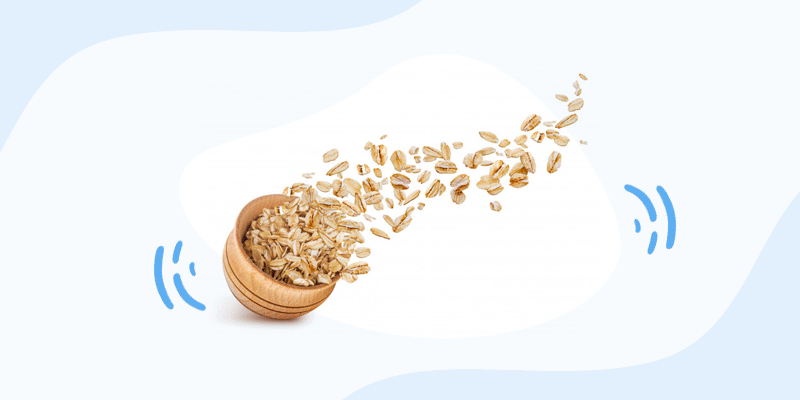Complete guide to the paleo diet

One of the most popular diet trends today is the paleo diet. It is not only known and followed by famous people, but also recommended by nutritionists to lose weight and even in some restaurants they offer you the “Paleolithic” menu.
This eating regimen has been immersed in the healthy field for some time, but doubts, recent scientific evidence, and new critics and defenders are also emerging.
In this post you will have a guide that will help you understand everything about this diet in depth. If you are interested, I invite you to continue reading.
How did this type of diet come about?

When truly modern humans appeared on the scene, around 50,000 years ago, ancestors already ate an omnivorous hunting and gathering diet.
About 10 thousand years ago, most of the world discovered agriculture, thus moving from the Paleolithic period to the Neolithic.
Planting and agriculture provided humans with a consistent and relatively reliable food supply, without which civilization could never have developed.
Many people believe that the shift from a hunting and gathering diet (rich in wild fruits and vegetables) to an agricultural diet (rich in grains) gave rise to new modern chronic diseases such as obesity, diabetes and cardiovascular disease.
This is one of the main reasons why proponents of the paleo diet say that we should return to a diet based on meat and agricultural products like that of our ancestors.
What is the paleo diet?
Also known as the primal diet, it is based on two central perceptions:
- Adapt to eating certain types of foods.
- Stay healthy, strong and fit, to avoid the chronic diseases of modernity.
During the Paleolithic period, ancestors ate according to the season and what was available to them at the time.

The main idea of paleo

The concept of this primary diet is that the ancient human genetic model does not coincide with the diet and lifestyle of the 21st century. And this results in your health and well-being being affected.
This way of eating makes some key evolutionary assumptions, which could help you understand it much better:
- Paleolithic hunter-gatherers were robust and healthy. If they didn't die young from accidents or infectious diseases, they lived long enough.
- When Paleolithic hunter-gatherers switched to Neolithic agriculture (to the modern diet), they became relatively sicker, shorter and thinner.
While an argument can be made for this evolutionary trend, a recent study in The Lancet analyzed 137 mummies from societies around the world, from Egypt, Peru, the southwestern United States, and the Aleutian Islands, for signs of atherosclerosis .
They observed probable or definite atherosclerosis in 47 of 137 mummies from the four geographic regions, regardless of whether the people had been farmers or hunter-gatherers, peasants or the social elite.
Everyone suffered from hardening of the arteries, regardless of their lifestyle. In fact, hunter-gatherers from the Aleutian Islands had the highest prevalence, with 60% of their mummies showing evidence of atherosclerosis.
Keep these factors in mind before starting a paleo diet

This last century has been too short a period for significant genetic adaptation. Industrialization and technology have radically changed the way you eat and live.
Today, a quarter of people subsist on packaged and commercially prepared foods rich in refined sugars and starches, highly processed fats, and sodium.
Without a doubt, this modern Western diet is not healthy for anyone. Proponents of the paleo diet are absolutely right on this point.
Remember that ancestors lived practically all over the world, in totally diverse customs and environments. And yet, in most cases, primary diets certainly included more vegetables and fruits than most people eat today.
If I want to be healthier, should I eat like they did in the Paleolithic era?

Perhaps this may be so, but not necessarily for the reasons that proponents of this type of diet recommend. And I show you why:
- Most fruits and vegetables today are not like those we ate before.
Those of that era were often bitter, much smaller, difficult to harvest, and sometimes toxic.
Over time, plants have been bred with preferred and attractive traits: the largest fruits, the prettiest colors, the sweetest pulp, the fewest natural toxins, and the highest yields.
- The vast majority of animal foods today are not the same as before, since they are fed with grains and injected with hormones for faster growth.
Keep in mind that beef steak (even if grass-fed), is not the same as bison steak or venison.
From now on, buy the most natural and organic foods possible. Just remember that what you eat today didn't even exist in the Paleolithic era.
Cereals and legumes in the primary diet

The main reason why its defenders eliminate or restrict the consumption of cereals and legumes is because of the antinutrients (I will tell you about them later).
For its followers, these foods were not consumed in the Paleolithic period, but there is research that proves otherwise.
Cereals:
These stand out for the antinutrients they contain, such as gluten and phytates . However, they were consumed in the Paleolithic period:
- Recent studies in the Proceedings of the National Academy of Sciences , using more advanced analytical methods, have found that ancient humans may have begun eating grasses and grains before the Paleolithic era began, up to three or even four million years ago.
Legumes:
Beans, peanuts, peas, lentils are also restricted in the primary diet and for a similar reason to cereals; the antinutrients they contain, which are lectins and phytates.
In contrast, the idea that legumes were not widely available or consumed is completely false.
- A 2009 review revealed that in the Paleolithic period they not only ate legumes, but that they were an indispensable part of their diet.
The antinutrients
Antinutrients are the chemical defenses that plants use to defend themselves against predators. And in theory, these prevent or hinder the absorption of other nutrients that your body needs.
But you don't have to worry. In fact, research suggests that the benefits of grains and legumes far outweigh their antinutrient content, especially when cooked.
Once cooked, these chemicals can be good for you. Lectins can reduce tumor growth, while protease inhibitors become anti-inflammatory and anti-cancer.
paleo diet vs. Mediterranean diet
There have been clinical trials proving the effectiveness of the paleo diet:
- In the first, they recruited diabetic and prediabetic volunteers with heart disease and put them on one of two diets:

After 12 weeks, the Mediterranean group lost body fat and saw an improvement in diabetes markers. But those in the paleo group did even better, losing 70% more body fat and also normalizing their blood sugar levels.
- In the second investigation it was found that:

The paleo group ate much more protein, compared to the Mediterranean diet group.
And by consuming a large amount of this macronutrient, they were able to maintain dense and strong lean mass, become leaner and more satisfied.
What do critics say about the principles of this diet?
It is a difficult task for critics to say anything against the replacement of processed foods with natural and organic foods. However, there are some factors that are still in doubt regarding this diet:

Does it really work?
The paleo-style diet emphasizes whole foods, lean proteins, vegetables, fruits, nuts and seeds, which is a huge improvement over the average Western diet.

However, more rigorous trials are needed before reaching definitive conclusions. For this reason, I recommend that you consult a nutritionist to design a diet that fits your needs.
Despite the obvious benefits over the typical diet, paleo has some flaws.

Every diet has its pros and cons. And this does not escape them.
If you decide to follow this regimen, it is essential that you attend with a professional who can guide you and recommend what best suits you.



